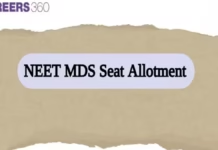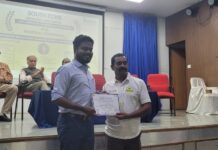Vagish Jha, Academic Lead and Head of Teacher Training, Schoolnet
In India, the culture of learning has been present since time immemorial. As a nation, we have seen teaching methods evolve rapidly in the past few decades. While gaining knowledge from mainstream education, students have always opted to learn additional skills like singing, music, dance, and more from those around them. Today, the digital world has become the source of supplementary education to enlighten young minds.
Parents and students have also realised that job opportunities have become competitive and there’s an increased demand for various supplementary educational options, such as distance learning, online coaching, among others.
READ: Alakh Pandey, Founder, PW (PhysicWallah)
Today, we are looking at a new generation of learners. They know that education is not confined to the four walls of the classroom. Digital content for schools can be easily accessed through digital platforms like mobile, tab, desktop, and even on a TV. Having been exposed to these digital modes of learning, students are quite comfortable absorbing information from them. The last two years have witnessed more and more educational products, packaged in innovative ways, rising in popularity in both urban and rural areas.
Digital content for schools tries to address the gaps prevalent in the traditional learning methods. Problems have been identified in the quality of teachers and their training, lack of teachers in rural areas, poor quality teaching materials, inability to provide individual attention to students, and more.
Important Announcement – EasyShiksha has now started Online Internship Program “Ab India Sikhega Ghar Se”
With more than 40 students in every class, a large number of students are not able to get personal attention from the teachers. During lockdowns, teachers aren’t able to focus on each student during online lessons and understand whether they have grasped what is being taught. While parents do lend a helping hand at home, it often becomes difficult if both parents are working.
India has its largest student population living in rural areas. A lot of them travel long distances for their education. In rural areas, getting tutors is also a problem. Digital content for schools is a boon for them. It provides academic enrichment opportunities for children, particularly students who attend resource-strapped and low-performing schools. The spread of education is directly related to the growth and development of the nation. Which is why India is focusing on reaching out to more and more children and strengthening their foundation.
Visit EasyShiksha for skill development
The government of India is making efforts to address these issues through PM eVidya TV Channels which are being expanded through ‘One Class, One TV channel’ programme. Presently, the twelve TV channels are providing supplementary education in regional languages for Classes 1 to 12.
The programme helps students meet state and local student standards in core academic subjects, such as reading and math; offers students a broad array of enrichment activities that can complement their regular academic programs; and offers literacy and other educational services to the families of participating children.
Increasingly, more teachers, students, and parents are appreciating the benefits of supplementary education content in its digital format… The new generation of students, benefitting immensely from the advancements of technology and its application in education, will surely go on to boost India’s progress.







































































